Women’s outdoor clothing, women’s climbing shoes, harnesses, backpacks, women’s mountain boots. We explain the differences and benefits.

Clothing, footwear, harnesses, climbing shoes, backpacks...women’s gear. Foto: S. Duerto/Barrabes
In this article, we’re going to talk about the differences in the design and functionality between male and female specific mountain clothing and equipment. We’re not talking about aesthetics, but the specific features applied to women’s models and the benefits they achieve.
These products try to adapt to the morphology and anatomy of the average man or woman in order to enhance safety and comfort.
In some cases, as we will explain, it is essential that an item has a women specific version, such as the enhanced security offered by gender specific harnesses. In other cases, such as with clothing or backpacks, it is not essential but is certainly preferred by women, while other products, like climbing shoes or skis, are an improvement for most women (and some men) but not all.
We will look at the differences between men and women’s (and unisex) products and the benefits they provide, bearing in mind that in outdoor environments comfort and functionality enhance safety. If your footwear is uncomfortable or if your technical clothing lets in the cold due to a bad fit, you end up being at greater risk.
A final note, before we begin. If an item is marked as unisex, it probably means it is the men’s model and the manufacturer has not made a women specific model.
Climbing
Women’s harnesses
When it comes to choosing a harness, it is essential that it fits correctly and does not impede movement. If it is too small, it will be uncomfortable and the waist strap may be too short to close the buckle correctly (a generous length of the strap should hang from the buckle). A harness that is too big will compromise the level of safety in the event of a fall.
A harness should be the correct size and fit so that forces are distributed evenly in the event of a fall. Bearing in mind that one of the main differences in male and female anatomy is the shape of the hips, it is logical that most brands offer a women and men specific model.
The essential features of a women’s harness are:
- The female waist is higher and the waistbelt of the harness is therefore placed higher to prevent it from tightening around the hips.
- As the distance is greater between the hips and legloops, the elastic straps are also longer.
- Occasionally, when the waistbelt lies between the hips and waist, it has a wider design and is placed at a slight angle to offer a more ergonomic fit.

Wild Country Mission women’s harness. High and slightly angled waist
It is important to understand that a good fitting harness is crucial for our safety. For this reason, women should not choose a men’s harness if the waistbelt fits over your hips. This will also impede freedom of movement.
Women’s climbing shoes
Most brands offer some models that are unisex and other models that are women and men specific.
Unlike the waist and hips, men’s and women’s feet are very similar, other than the size. However, the shape of feet vary greatly from one person to the next and this is where the problem lies.
Anyone who does not have a “standard” shaped foot has problems finding comfortable footwear and this makes it even more difficult to find a good fitting climbing shoe.
Women’s feet are generally slightly narrower in the heel with a slightly higher and narrower arch in the middle and a wider forefoot. This is reflected in women specific climbing shoes along with the smaller sizes manufactured.

Scarpa Vapor W, women’s climbing shoes
Most women will appreciate these features and will find fewer gaps and pressure points and the heel will not move around. However, some will find that, due to the shape of their feet, a better fit is found in men’s or unisex shoes.
The opposite also applies: some men find women’s climbing shoes offer a better fit. In fact, a very well known ninth grader wears women’s climbing shoes as they offer greater precision.
As we mentioned earlier, some women specific products, such as clothing, backpacks or harnesses are popular with all women and others vary from person to person. Footwear is an example of the latter.
Mountain clothing
We are used to clothing being specifically designed for men or women. But in the case of outdoor clothing the reason for this is to make it more technical by providing greater agility and eliminating cold spots.
No explanation is needed for certain women’s garments, such as underwear, pants, tops, leggings, etc. Pants need to fit well around the waist, hips and legs for comfort, agility and freedom of movement. Other garments are less obvious, such as base and mid layers.
Take a polar fleece midlayer, for example. A straight cut would normally leave a gap in the waist area, resulting in a triangle of air that would take longer to heat up and would also cool down very quickly. It would also inhibit body movement. It is for this reason, rather than for aesthetics, that they are tailored in at the waist and are wider at the hem.

Salewa Puez Melange Pl W, women’s polar fleece, tailored to prevent cold spots
The outer, shell layer may seem to be similar to the men’s versions, but this is not the case. It also needs to be tailored to prevent cold spots and provide freedom of movement.
Footwear
Apart from women’s footwear being made in smaller sizes, it offers the same differences as with climbing shoes and so again, women specific boots are preferred by most women, but not all.
Each of us are usually well aware if our feet do not fit the standard shape and we do not need a pair of boots to teach us this.
So the differences are the same as those found with climbing shoes.. with an added difference regarding high cut boots.

Garmont Lagorai GTX W women’s trekking boot
Women’s outdoor footwear is molded on a standard foot: female feet tend to be narrower at the heel (a heel that moves around will guarantee blisters), a higher arch, narrow center and wider forefoot.
Women’s calf muscles are normally lower and wider. High cuff women’s boots usually take this into account and have a wider cuff for a better fit.
Equipment
Women’s backpacks
A backpack used to consist of a flat sack with shoulder straps. Nowadays they have ergonomic designs that allow us to carry heavy loads in comfort, without restriction to our freedom of movement.
The design of a pack is more important than it may seem and has a lot to do with efficiency: contrary to belief, in a good-fitting backpack 75 to 85 percent of the load should fall on the waistbelt. This way the weight is distributed evenly over the body. In the older backpacks, the shoulders took most of the weight and this caused greater fatigue and discomfort.
In order to achieve this weight distribution, with the waist belt bearing three quarters of the weight, backpacks (large capacity in particular) need to be anatomical, featuring ergonomic waistbelts and backpanels that feel like a prolongation of our body.
For this reason, large-capacity backpacks are specifically designed for men and women. As the load falls on the waistbelt, this has to adapt to our anatomy and the waistbelt is therefore one of the main differences between men and women’s backpacks.
- Women’s backpacks are shorter as the hips are usually higher
- The waistbelt is higher, so that it lies between the waist and hips, rather than on the hips.
- The waistbelt is wider, to dissipate the load
- The waistbelt is set at an angle to adapt to the curve between the waist and hips.
- The shoulder straps are tailored to fit around the chest.
- Like clothing and footwear sizing, backpanel sizes are women specific.
This photo shows a women’s Deuter Aircontact backpanel on the left and a men’s on the right. You can see how the women’s model has a higher and angled waist and the shoulder straps are curved

Deuter Aircontact for men (right) and for women (left)
As women’s packs are made to be slightly shorter in the backpanel, this means they usually have less capacity than the men’s model. For example, Deuter Aircontact pack sizes for men are 65+10, 55+10 and 45+10, while the women’s sizes are 60+10, 50+10 and 40+10.
Women’s sleeping bags
Sleeping bags come in different sizes and this is important, because the larger the space between the sleeping bag and your body, the harder your body has to work to warm it up, which leads to a lower temperature.
This is the main reason why sleeping bags are made with women specific models.
- To adapt to your body shape, women’s models are wider at the hips and narrower at the waist to prevent cold spots.
- Medical studies have shown that the average woman is 5ºC more sensitive to the cold, especially in their extremities, due to circulation. For this reason, women’s sleeping bags sometimes have more protection in the foot box. This usually consists of a Thermolite fleece lining.
Skis
Women’s skis
Many believe that women specific skis are men’s skis with a cosmetic make-over. However, depending on the brand and model, there are also differences in weight, flex, width, length and the binding position.
- Most models are lighter, to facilitate the parallel position and put less strain on your leg muscles. This is a general difference found in most models.
- Women specific models are less rigid than unisex models. Designed with greater flex, they require less leg weight to be reactive. There is usually 20 percent difference in rigidity, depending on the type of ski and, in particular, the level: beginner, intermediate, expert. This is also a general difference found in most models.
- Depending on the brand and model, the position of the bindings is placed a few centimeters forward to match the center of gravity which is different in the male and female anatomy (a woman’s tends to be lower). This allows more power and energy to be transferred to the tips, increasing stability and facilitating the turn. This binding displacement is no longer as common, due to the influence of the turn radius.
- Some models are narrower; women usually have smaller feet and this way less strength is required for edging. Women are also usually lighter than men and do not require as much floatability.

Elan Interra Power Shift + Elx 11.0, for women
In this case, brands create a ski that can work with most women, while others prefer the features of a unisex ski. But the opposite also applies: if the length is right, due to their style of skiing or build, some men prefer the lower weight and greater flex of a women’s ski.
Apart from the graphics, designed to appeal to men or women, maybe in the future brands will manufacture different models of skis based on the level of flex and weight, rather than basing them on gender, so that we can concentrate purely on the most suitable model.
Women’s ski boots
As we have mentioned above, the main differences are the cuffs, due to women’s lower and wider calf muscles, the narrower heel, higher arch and wider front.

Atomic Hawx Ultra 95 S W, women’s ski boot
It is very important that ski boots take these differences into consideration when it comes to designing ski boots. When alpine skiing, the foot doesn’t flex or move and any unnecessary pressure causes great discomfort and leads to poor circulation and cold.
The high cuff of a ski boot makes it particularly difficult to design a boot that adapts to the lower, wider calf muscle of the average woman.
- Ski boots usually have a lower cuff
- The front is slightly wider to prevent pressure and cold spots
- They are narrower at the heel
- They have a higher arch



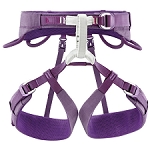

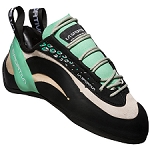


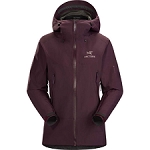

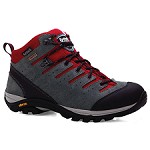

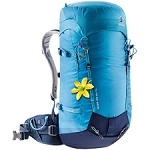

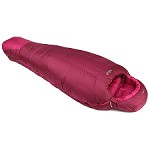



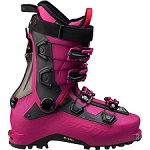
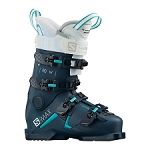




Leave a comment
Be the first to comment on this article.